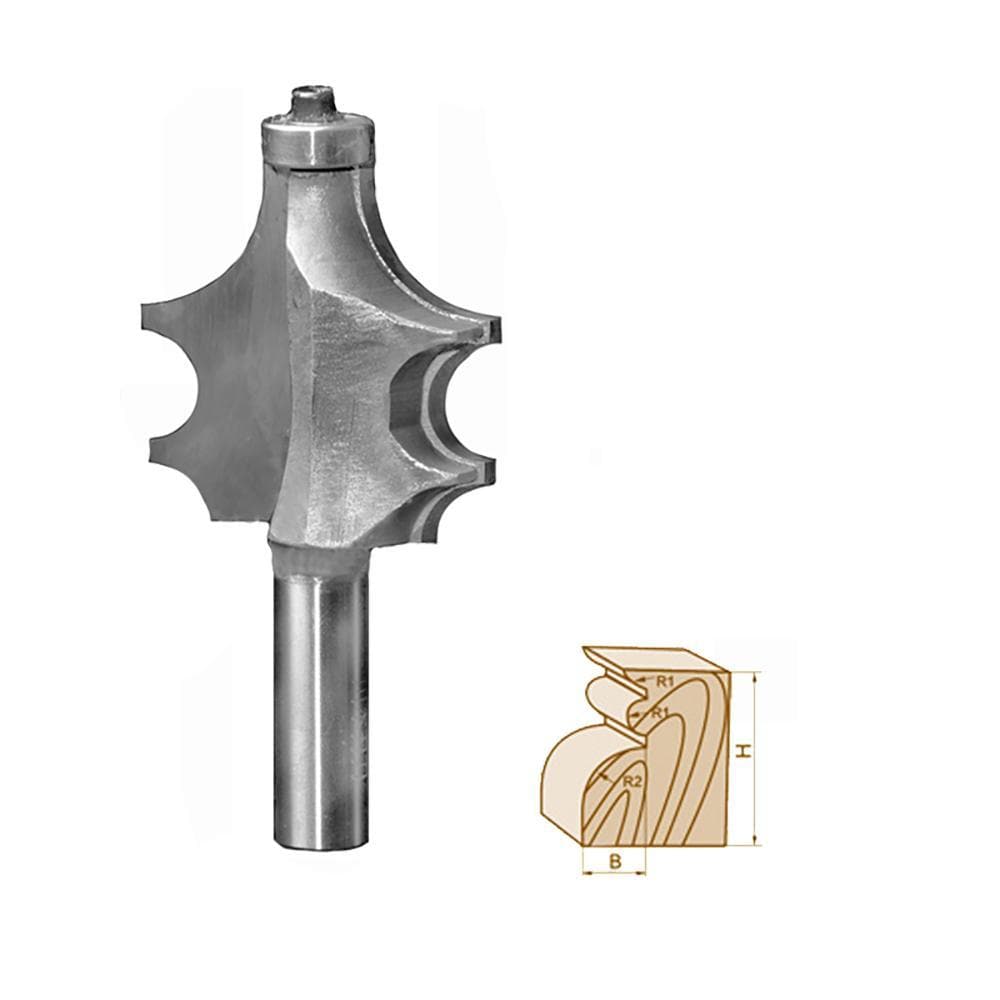MOLDING/HANDRAIL ROUTER BITS
9 types of molding router bits
Molding router bits are widely used in various woodworking projects, including furniture making, cabinetry, trim work, and architectural detailing. They offer an effective way to elevate the appearance of the finished piece and add a touch of craftsmanship and artistry. Here are several types of molding router bits commonly used in woodworking:

1. Cove Bits: Cove bits create concave, curved profiles. They are often used to create decorative edges or moldings with a smooth, rounded appearance. Cove profiles can range from shallow curves to deeper, more pronounced shapes, allowing for versatility in design. Cove bits are commonly used to add visual interest to furniture, cabinetry, and architectural trim.
2. Ogee Bits : Ogee bits create an "S"-shaped profile with a concave curve flowing into a convex curve. This classic molding profile is well-known for its elegance and versatility. Ogee bits are available in various sizes, allowing for different design options. They are commonly used for creating decorative edges on furniture, picture frames, and architectural moldings.
3. Beading Bits: Beading bits are designed to create a decorative bead or groove along the edge of a workpiece. The bead adds texture, depth, and visual interest to moldings, frames, and other woodworking projects. Beading bits are available in different sizes, allowing for variations in the bead's diameter and depth.
4. Roman Ogee Bits: Roman ogee bits are similar to ogee bits but typically have a deeper and more pronounced profile. They create a more dramatic and intricate molding design. Roman ogee profiles often feature a steep concave curve that transitions into a smaller convex curve. These bits are commonly used for creating decorative moldings, furniture edges, and architectural details.
5. Roundover Bits: Roundover bits create a rounded edge profile. They are commonly used to soften sharp edges and add a smooth and finished look to moldings, furniture, and other woodworking projects. Roundover bits are available in various sizes, allowing for different radii of curvature. They are versatile and widely used due to their ability to create a simple, clean, and timeless profile.
6. Bullnose Bits: Bullnose bits create a semi-circular or half-round profile. They are often used to create a smooth and rounded edge on moldings or to soften the corners of furniture, cabinetry, and other woodworking projects. Bullnose profiles can vary in size, allowing for different degrees of curvature. These bits are particularly useful when a soft, rounded appearance is desired.
7. Chamfer Bits: Chamfer bits create a beveled edge or angle along the workpiece's edge. They are often used to add a decorative touch or to create a smooth transition between different surfaces. Chamfer bits are available in various angles, such as 45 degrees or 30 degrees, allowing for flexibility in design. They are commonly used for creating chamfered edges on moldings, furniture, and architectural details.
8. Cove and Bead Bits: Cove and bead bits combine the features of both cove and beading profiles. These bits create a concave curve followed by a bead, resulting in a unique and decorative molding design. Cove and bead profiles are commonly used for creating moldings, frames, and other woodworking projects where a distinctive and eye-catching detail is desired.
9. Edge Forming Bits: Edge forming bits encompass a wide range of decorative profiles, including multiple curves, beads, coves, and more. These bits offer versatility and creativity for adding unique and customized moldings to woodworking projects. Edge forming bits are available in a variety of designs, allowing woodworkers to experiment and achieve their desired aesthetic.
When choosing molding router bits, consider the specific profile, the size of the bit, the material you'll be working with, and the capabilities of your router. It's important to select bits that align with the design and style you want to achieve for your woodworking project.
